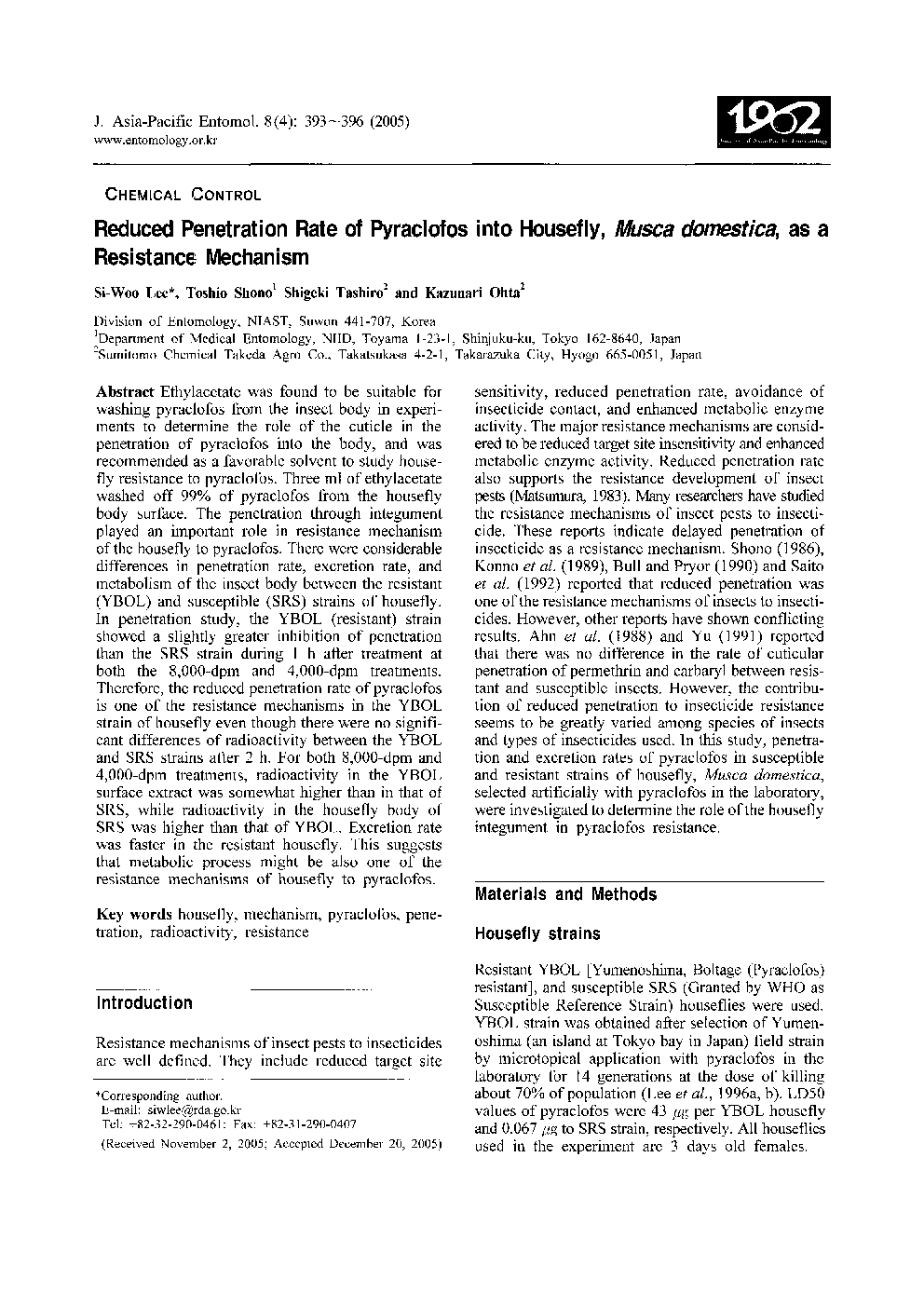| Article ID | Journal | Published Year | Pages | File Type |
|---|---|---|---|---|
| 9476670 | Journal of Asia-Pacific Entomology | 2005 | 4 Pages |
Abstract
Ethylacetate was found to be suitable for washing pyraclofos from the insect body in experiments to determine the role of the cuticle in the penetration of pyraclofos into the body, and was recommended as a favorable solvent to study housefly resistance to pyraclofos. Three ml of ethylacetate washed off 99% of pyraclofos from the housefly body surface. The penetration through integument played an important role in resistance mechanism of the housefly to pyraclofos. There were considerable differences in penetration rate, excretion rate, and metabolism of the insect body between the resistant (YBOL) and susceptible (SRS) strains of housefly. In penetration study, the YBOL (resistant) strain showed a slightly greater inhibition of penetration than the SRS strain during 1 h after treatment at both the 8, 000-dpm and 4, 000-dpm treatments. Therefore, the reduced penetration rate of pyraclofos is one of the resistance mechanisms in the YBOL strain of housefly even though there were no significant differences of radioactivity between the YBOL and SRS strains after 2 h. For both 8, 000-dpm and 4, 000-dpm treatments, radioactivity in the YBOL surface extract was somewhat higher than in that of SRS, while radioactivity in the housefly body of SRS was higher than that of YBOL. Excretion rate was faster in the resistant housefly. This suggests that metabolic process might be also one of the resistance mechanisms of housefly to pyraclofos.
Related Topics
Life Sciences
Agricultural and Biological Sciences
Animal Science and Zoology
Authors
Si-Woo Lee, Toshio Shono, Shigeki Tashiro, Kazunari Ohta,
